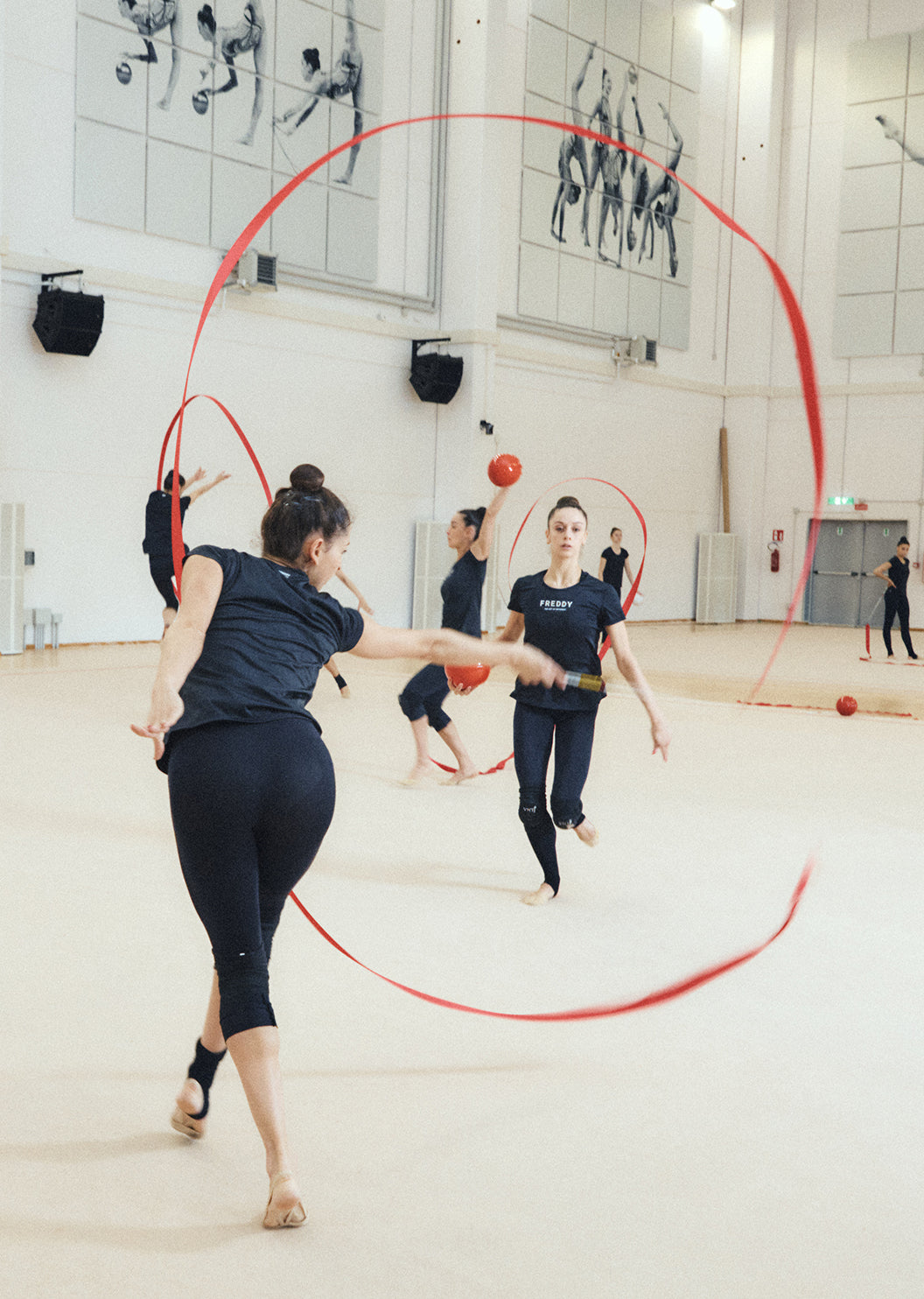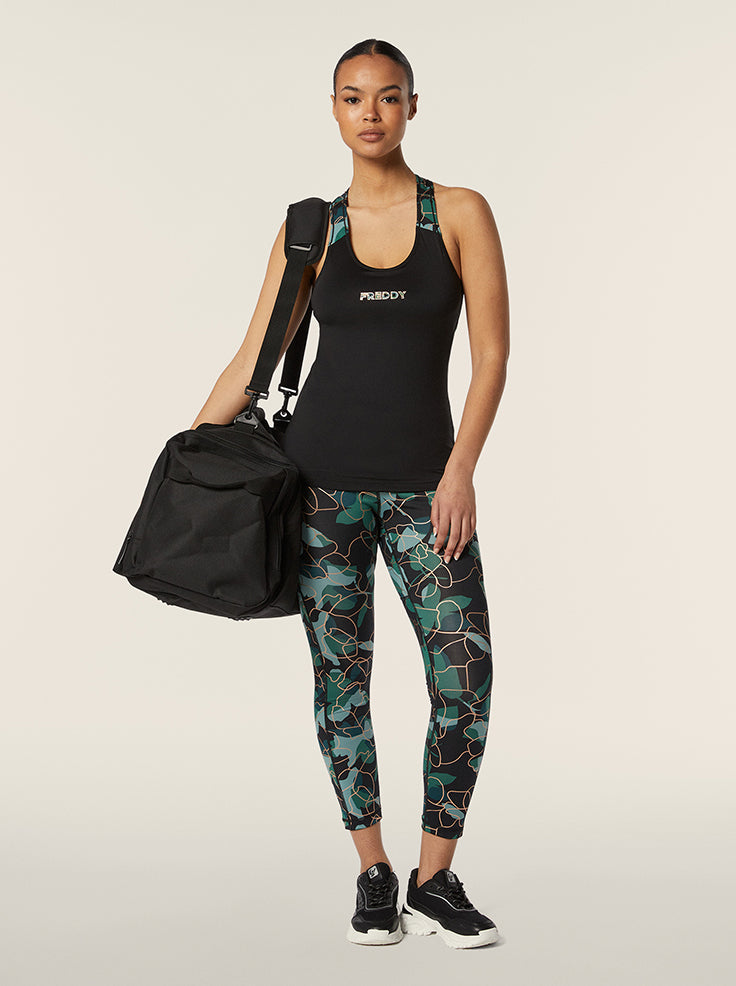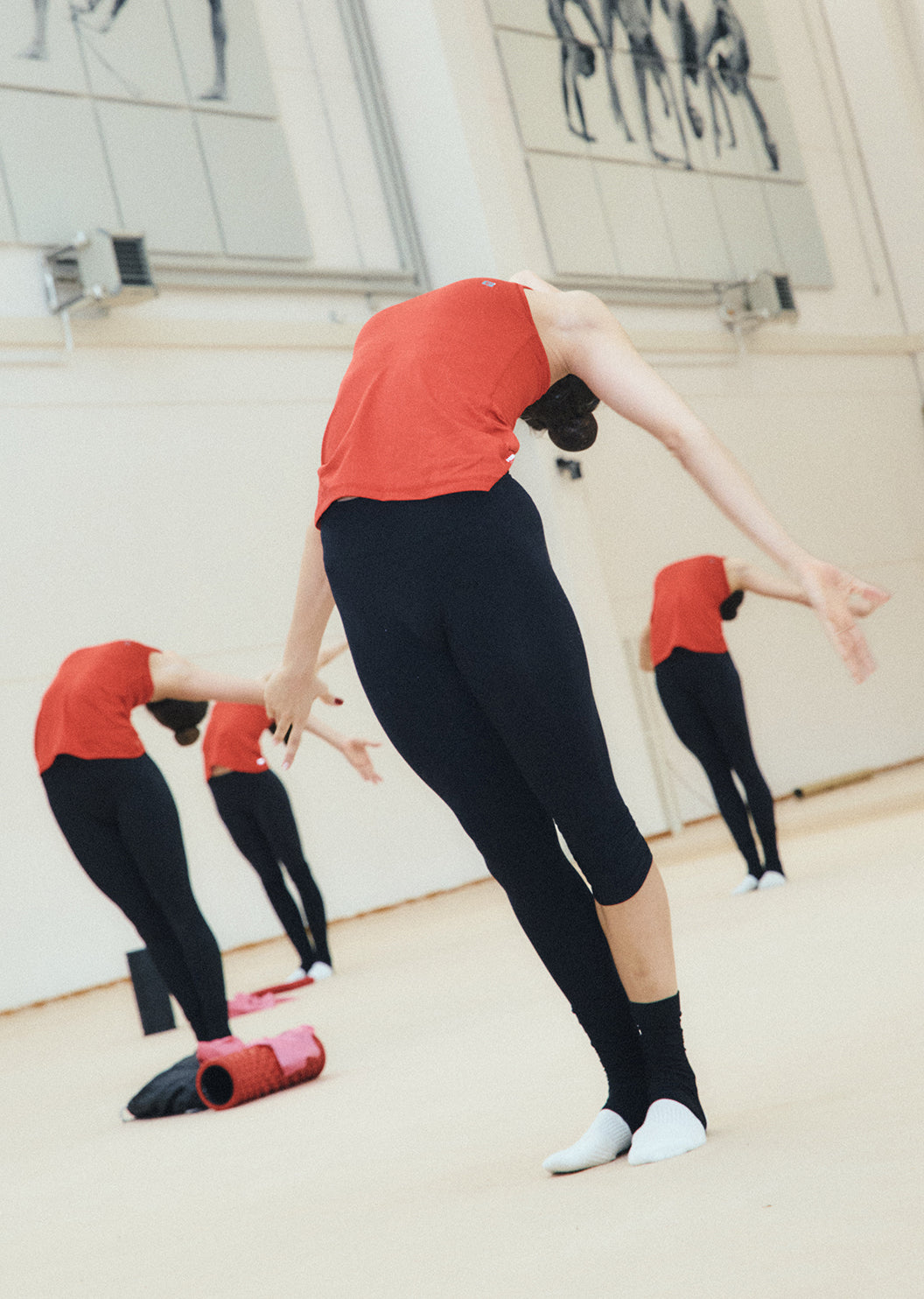
Rhythmic gymnastics clothing: what’s inside a gymnast’s bag
Rhythmic gymnastics is a fascinating discipline that combines elements of dance, gymnastics, and art. To excel in this activity, it’s essential to have the right clothing. Let’s take a look inside a gymnast’s bag to discover the clothing, accessories, and equipment needed to perform like a champion.
Characteristics of rhythmic gymnastics clothing
Clothing must meet specific technical and functional requirements. First of all, it should be comfortable and allow for a wide range of movement. The fabrics used are generally stretchy and breathable, such as lycra or stretch cotton, which help keep the skin dry during training. Another important aspect is the fit: the clothing should hug the body perfectly without being too tight or too loose, to avoid distractions or movement restrictions.
Leotards and bodysuits
Leotards, also known as bodysuits, are the main garment in rhythmic gymnastics. They must be made of high-quality materials that ensure durability over time. It’s important to choose a leotard that offers good muscular support and is decorated in compliance with competition regulations. Decorations may include sequins, rhinestones, and embroidery, but must be applied without compromising the fabric’s flexibility.
Shorts, leggings, and skirts
Shorts and leggings are often worn during training to offer greater comfort and freedom of movement. They should be made from lightweight and breathable materials. Skirts, on the other hand, are more commonly used in performances and competitions. These can be paired with leotards and must also comply with regulations regarding length and embellishments.

Essential accessories
In addition to main garments, there are several accessories that can enhance performance in rhythmic gymnastics. Among these are specific shoes or the discipline, which must be light and flexible to allow agile and precise movements. Hair ribbons are also important: they must keep hair neatly tied without causing discomfort or distractions during routines. A jersey waist warmer is a useful accessory for keeping the abdominal area warm during intense training. It helps prevent muscle injuries by maintaining warmth in the core muscles.
The apparatuses
Rhythmic gymnastics includes various apparatuses such as balls, hoops, ribbons, clubs, and ropes. Choosing the right apparatus is crucial for performing routines correctly.
Balls
Balls must have good grip and be made of durable yet lightweight materials. All apparatuses must also meet specific standards in terms of weight, size, and material.
Hoops
Hoops are one of the most iconic apparatuses in rhythmic gymnastics. They must be lightweight yet sturdy, usually made of plastic or light metal. The size of the hoop should match the athlete’s height, and it’s important that it offers a good grip to facilitate complex moves like rotations and throws.
Ribbons
Ribbons are used to create smooth and elegant movements through the air. They consist of a lightweight stick attached to a long ribbon made of silk or similar fabric. Ribbon length varies depending on the athlete’s age; it should be long enough for wide movements but not so long as to become cumbersome.
Clubs
Clubs are used in pairs in rhythmic gymnastics. They resemble small juggling pins and require great hand coordination to perform synchronized moves such as throws, rotations, and intricate catches. Clubs must be well-balanced to ensure precision during routines.
Ropes
Ropes are used to create dynamic and precise movements during performances. They are made of lightweight and durable material, usually nylon or another synthetic fiber, allowing gymnasts to perform a variety of shapes and acrobatic elements without hindrance. Rope length is regulated based on the athlete’s size, ensuring it is long enough for wide, agile movements while still manageable for precise choreography.

Choosing the right clothing: practical tips
Choosing the right clothing can make a big difference in athletic performance. Here are some practical tips:
Try different models
Every athlete has unique needs; test various models until you find the most comfortable.
Check the seams
Seams should be flat and well-finished to avoid skin irritation.
Choose breathable fabrics
Breathability is essential to keep the body dry during intense training.
Think about safety
Avoid garments with decorative elements that could snag or cause injury.
Quality materials
Choosing quality materials is key to ensuring durability and optimal performance. Lycra is one of the most widely used materials due to its elasticity and resilience. Stretch cotton is also a good option for those who prefer natural yet high-performing fabrics.
Garment care
Although we can’t go into detail about garment care per the provided guidelines, it’s still important to remember that properly taking care of your clothing can extend its lifespan. Following the manufacturer’s instructions for washing and storage can make a significant difference.
The importance of psychological comfort
The importance of psychological comfort in rhythmic gymnastics should not be underestimated. Feeling comfortable in what you wear can positively influence performance in competitions or training. Wearing clothing that reflects your personal style can boost confidence and contribute to overall better results.
In conclusion, choosing the right clothing for rhythmic gymnastics requires attention to technical details as well as personal preferences. Understanding the characteristics of each garment and accessory helps you make informed choices that can significantly enhance athletic performance. Always prioritize comfort and quality materials to get the most out of your training and performances.




